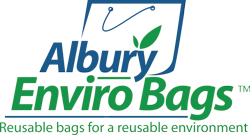There is great and an ever-growing awareness of the ways that plastic bags can have a negative impact on the environment. Traditionally and historically, the processes used in the manufacture and production of plastic bags have had a less than kind and desirable effect on the environment and green bags have been touted as a more environmentally friendly alternative.
How do Australians use plastic bags?
Just four years ago in 2007, it was estimated that 3.9 billion plastic bags were used by people in Australia. These bags were predominantly provided by supermarkets, while other shops, including: fast food outlets, service stations, small retailers and liquor retailers, also issued plastic bags to their customers.
Why plastic bags?
For a long time, plastic bags have been appreciated for their functional and design qualities. Fit for the purpose of carrying items, light, reasonably durable, cheap and a hygienic way to carry food and other products, plastic bags have enjoyed popularity with customers and retailers.
What happens to plastic bags?
While some plastic bags are recycled, the majority find their way into landfill. Unfortunately, an astounding number of plastic bags end up as land and marine based litter.
While any amount of plastic bags becoming litter is undesirable, efforts to raise awareness and to encourage the recycling, reuse and responsible disposal of plastic bags have apparently had considerable success.
What about promotional bags?
Promotional bags, also known as ‘green bags’ have long been seen as a more environmentally friendly option to single use plastic bags. Essentially, the idea of the green bag (a reusable shopping bag) is that it will be used and reused several times.
Most commonly made from durable materials, such as woven synthetic fibres, cotton, canvas or hemp, promotional bags branded with company details are popular and certainly designed for multiple use.
Are they environmentally friendly?
The extent to which a green bag is reused really does determine how environmentally friendly it is. A growing body of evidence shows that the energy required to produce a single reusable bag is as much as the energy required to produce twenty eight traditional plastic shopping bags or eight paper bags.
A reusable promotional bag or green bag therefore needs to be used a number of times in order for it to be a more environmentally friendly option. If people do use and reuse their green bags, then the impact of these items on the environment is minimised and, when they feature a business’ details, the exposure that the business enjoys also increases.
A tip for businesses producing reusable bags as promotional items:
- In order to make green bags as environmentally sound as possible, businesses should ensure that the reusable bags that they offer are not only recyclable but also biodegradable. This is important and is not always the case with reusable bags.
- Regardless of the type of bag that is used, we all need to be mindful of the way that we use and reuse our bags. Responsible use of promotional and plastic bags is vitally important so that environmental impacts are significantly minimised.




